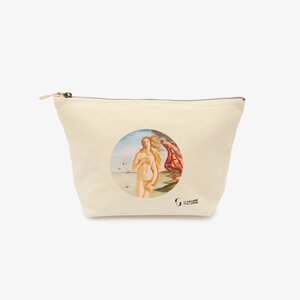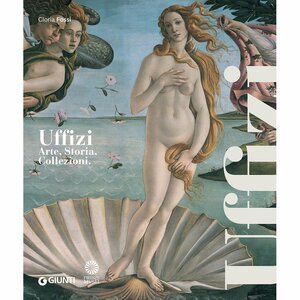Just past the halfway point of the first corridor of the Gallerie degli Uffizi opens the famous Tribuna. A magnificent, refined space, commissioned by Grand Duke Francesco I de’ Medici and conceived as a true room of wonders. Today it can be admired from various viewpoints but, for conservation reasons, it is no longer accessible to the public. Over time, the layout of this room has been modified to protect the objects originally kept there: the unusual configuration, its precious wall-coverings and furnishings, and the masterpieces on display still leave visitors speechless.
A princely wunderkammer: the origin of the Tribuna
It was Cosimo I (1519–1574), father of Francesco I (1541–1587), who asked Giorgio Vasari 1 in the mid-sixteenth century to design the Uffizi building, initially intended to house the city’s administration. The second Grand Duke was responsible, however, for its transformation into an exhibition gallery—the first of modern Europe. Francesco I had the corridors set with ancient marbles from the Medici collection and instructed the architect and friend Bernardo Buontalenti (1523–1608) to construct the Tribuna. What he wanted was a reserved space to suit his collecting interests and to accommodate works of art, valuable artefacts and mirabilia.
Within two years, between 1581 and 1583, Buontalenti created an octagonal room, probably inspired by the ancient Tower of the Winds in Athens and by the long Roman tradition of baptisteries and basilicas. The dome crowning the chamber ends in an open lantern, which also functions as a sundial, and the space is lit by the soft natural light that enters through the eight wall windows. Originally there was a single access from the corridor (the current side openings into the two adjoining rooms were added in the eighteenth century). The Tribuna was conceived as a place of private contemplation, the expression of a curious spirit that did not disdain rare and singular marvels.
Are you interested in articles like this?
Sign up for the newsletter to receive updates and insights from BeCulture!
An exclusive and precious treasure
A secret treasure-box of wonders, then, starting from the floor: a majestic inlay of ancient polychrome marbles, sourced from far and wide and probably obtained from the spolia of earlier works and buildings. Alabaster from North Africa, green porphyry from Turkey and from Egypt form a design still intact today—too precious, however, to be walked on any longer.
The crimson red velvet covering the walls has also withstood the passage of time—and of people: a colour which, according to a much-repeated theory, would allude to fire. Following this interpretation, the entire Tribuna was built with a deliberate reference to the four elements: besides fire, earth (the floor), air (the windows and the open lantern) and water. The latter is evoked by the astonishing vault closing the chamber, with its “sails” clad with 5,780 oyster valves from the Indian Ocean, specially chosen for their regular shape. The background—dyed with cochineal lake and laid with gold leaf—shimmers alongside the mother-of-pearl, amplifying the luminous effect.
By contrast, the countless objects kept here in the time of Francesco I have been partly dispersed or distributed among Florence’s various museums. At the centre of the Tribuna there once stood a large octagonal cabinet containing gems, cameos, medals, coins and other precious artefacts or items from the natural world. The walls held shelves filled with statuettes—Greek, Etruscan, Roman and Renaissance. The room was said to be so full of things to see that, during the Grand Tour 2, visitors would spend entire days there, entering in the morning and leaving only at dusk. Here too were the most prestigious paintings in the collection, among them the famous Tondo Doni by Michelangelo—today replaced by works that can be admired even from a distance.
The Tribuna today and its sculptures
Redesigns from the Lorraine period onwards have affected the Tribuna’s current appearance, which nonetheless has not lost its allure. In place of the central cabinet there is now a Florentine commesso table: a triumph of seventeenth-century hard-stone inlay perfectly in tune with the room’s sophisticated, luxurious tone. The space is punctuated by large ancient sculptures, with masterpieces such as the Venere dei Medici and the Lottatori.
The Venere dei Medici: eternal beauty among the Uffizi’s masterpieces
When one thinks of the Uffizi, it is hard to imagine a Venus more famous than Botticelli’s, yet once upon a time it was another work that drew intellectuals and admirers from across Europe: the Venere dei Medici (late 2nd century BC – early 1st century BC), described by the Marquis de Sade, in one of his writings, as “the most beautiful woman ever portrayed”.
The sculpture was found in the mid-sixteenth century near the Baths of Trajan in Rome—fragmented but in good condition—and was purchased by Ferdinando de’ Medici for the Villa on the Pincio. It reached Florence in 1677 and was displayed a few years later in the Tribuna, where it still occupies a place of the highest prominence.

The base bears the signature of the sculptor Cleomene, though not all scholars agree in identifying him as the author.
The pose, with the goddess covering her pubis and breast, is known as the Venus Pudica iconographic model, inaugurated in the fourth century by Prassitele with his Afrodite Cnidia, later much imitated. Subsequent analyses have revealed surviving traces of colour—cinnabar on the lips and Egyptian blue on the dolphin’s wave—confirming that the statue was originally polychrome. Another distinctive detail is the presence of holes in the earlobes for inserting metal earrings, heightening the lifelike effect of the figure.
At the end of the eighteenth century, during a visit to the city, Napoleon saw the Venere de’ Medici and decided to take it with him to France. This came to pass despite the brave attempt by the then Director, Tommaso Puccini, to prevent it. The Director had had the statue moved to a secure depot in Palermo but, following assurances from the French, agreed to have it brought back. During the sea voyage home, however, the Venere was seized by a French vessel and taken to Paris, where it remained until 1816, setting off a chain of events.
To make up for its absence, Antonio Canova was commissioned to create a replacement: thus the Venere Italica was born, an original work by the great Neoclassical sculptor.
A few years later, Canova himself travelled to France as papal emissary to negotiate the restitution of the works removed—including the Medicean Venus, which was returned and restored to its place. His Venere Italica was subsequently moved to the Galleria Palatina di Palazzo Pitti, where it is still housed.
By then, however, the French had grown attached to the idea of having a Venus of their own, and hurried to acquire another: the Venere di Milo, discovered on the Greek island of Milos in 1820 and today a famous symbol of the Louvre.

The Lottatori: a clash that symbolises peace
Along with the Venere dei Medici, two other sculptural groups were brought to Florence: the Lottatori and the Arrotino, both displayed in the Tribuna degli Uffizi.
Dating to the first century AD, the Lottatori depicts two youths engaged in hand-to-hand struggle. When the sculpture was discovered in 1583 near Porta San Giovanni in Rome, it was broken into more than 115 fragments and lacked the heads. When Cardinal Ferdinando de’ Medici purchased the work, he ordered that the missing heads be specially created and integrated on the model of the ancient original ones.
The scene’s dynamism and the pronounced musculature leave no doubt as to the Lottatori’s expressive power; scholars have recognised in it the representation of the pankration, a Greek combat sport considered among the most dangerous as it allowed immobilising one’s opponent and striking the face.
And yet it was also an event of the Olympic Games, during which a truce suspended all hostilities across the region. For this reason, some have interpreted this group of adversaries as an unusual symbol of peace.

The Arrotino: the prelude to a terrible punishment
A distinctive physiognomy sets the Arrotino apart from the other sculptures in the Tribuna. The man, crouched and half-naked as he sharpens a blade on a stone, has unusual features, unlike the classical, regular ideal we are used to. The furrowed forehead, the absorbed expression with arched eyebrows and upturned gaze, the dishevelled hair and hooked nose have led scholars to identify him as a Scythian slave—and not just any one, but the figure preparing the weapon for the punishment of Marsyas, the satyr who dared to challenge Apollo and was therefore condemned to be flayed. This statue—found in the sixteenth century in perfect condition and datable to around the second century AD—was probably part of a larger group that also included the figures of the god and the impudent satyr, never recovered.

To look upon the Tribuna today is not only to admire these and other works still housed here, but to immerse oneself—even if only for a few minutes—in the enchanted atmosphere of a late-sixteenth-century cabinet of wonders. An unforgettable experience, to say the least.
1. Giorgio Vasari (1511–1574), artist, architect and writer at the Medici court, was also the author of Le vite de’ più eccellenti architetti, pittori, et scultori italiani, da Cimabue insino a’ tempi nostri (published in 1550 and expanded in 1568), a foundational text in the history of Italian art.
2. The Grand Tour was a formative journey around Europe, very popular from the sixteenth to the nineteenth century, intended to refine knowledge and broaden the intellectual horizons of young aristocrats. Its duration was not fixed, but Italy was an essential destination.










